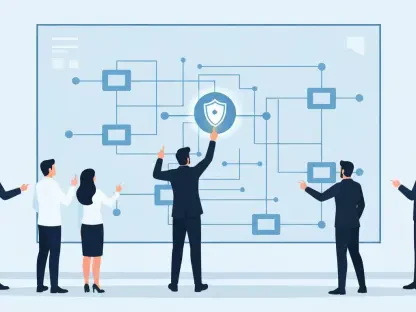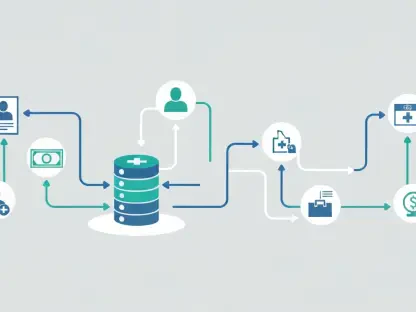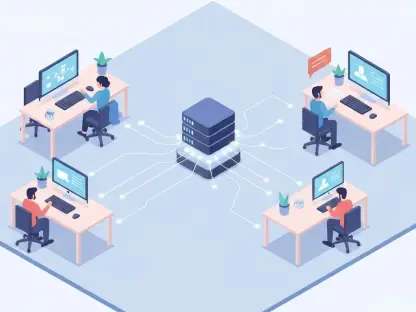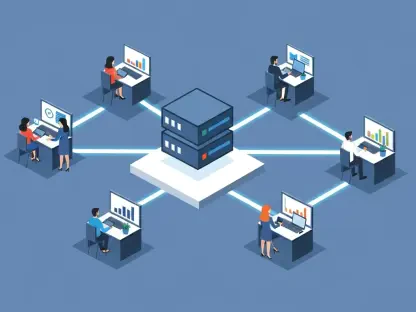As technology rapidly progresses, the integration of robust security measures into the software development lifecycle has become essential rather than merely an industry trend. With the increasing demand for swift release cycles, reliance on open-source components, and the influx of AI-generated code, development teams face significant challenges in maintaining security without hindering performance. Achieving the balance between speed and security is not easy, especially as innovative technologies like containers, APIs, serverless architectures, and Generative AI reshape how software is built. These advancements compel organizations to adopt DevSecOps, a transformative approach ensuring that security is no longer an afterthought but a core component seamlessly integrated into all stages of development.
Rethinking Development with DevSecOps
Embracing DevSecOps in modern software development means fundamentally altering how security is prioritized and integrated. The traditional model, which often relegated security checks to the final stages of development, is replaced by a process that embeds security from the very beginning. This proactive approach is often referred to as “shifting left,” signifying the move to address security concerns as quickly as they arise within developer tools. This shift left methodology not only helps in identifying vulnerabilities early but also prevents them from becoming complex issues later, saving both time and resources. Automation of security tests forms a critical component of DevSecOps, ensuring that checks do not slow down the continuous integration and deployment processes. By automating these tests, teams maintain consistency and speed, which is crucial for remaining competitive in today’s fast-paced tech landscapes.
Furthermore, the approach extends beyond internal development practices to the broader software supply chain, which often involves numerous third-party components. As reliance on external software libraries and frameworks increases, so does the potential risk. Thus, DevSecOps emphasizes securing these components, highlighting the importance of a comprehensive strategy for managing external dependencies to mitigate associated security risks. With this strategy, teams can more confidently integrate third-party tools, knowing they have been vetted and secured throughout the building process. Continuous security evaluation and improvement are also necessary, as threats evolve and software projects grow in complexity.
AI and Automation in Security
Artificial Intelligence is becoming a pivotal tool within DevSecOps, enhancing the efficiency of security processes by reducing false positives and streamlining testing. By employing AI capabilities, security teams can focus more effectively on real threats rather than sifting through numerous insignificant alerts, which can delay response times and overwhelm resources. AI’s role in evaluating vast amounts of data ensures that testing processes remain thorough, even as automation accelerates their execution, allowing development cycles to continue unhindered by overly burdensome security checks.
The integration of AI with security frameworks provides more dynamic and adaptive responses to the evolving threat landscape, aligning security measures closely with real-world conditions. This adaptability allows organizations to ensure security measures do not merely keep pace with a constantly changing environment but actively anticipate and counteract potential new threats before they become critical issues. AI-driven tools offer features like real-time dashboards and integrated data views, providing complete visibility into the state of application security and governance.
Navigating API security is another crucial aspect of modern software development, calling for rigorous testing akin to that which applications undergo. The consistency in API testing ensures reliable and secure integrations between applications and platforms, reducing points of vulnerability. With AI’s aid, these tests are more intelligent and context-aware, aligning seamlessly with DevSecOps principles of continuous integration, delivery, and security enhancement.
Achieving Seamless Integration
The ultimate strength of DevSecOps lies in its ability to integrate into existing development workflows without being obtrusive. Thoughtful implementation involves leveraging the right tools and practices, ensuring a balance between agility and security. This balance requires tools that support real-time collaboration and enable developers, security professionals, and operations teams to work cohesively towards common objectives. These tools should facilitate communication across teams and provide visibility into development and security processes, allowing potential issues to be resolved collaboratively and without delay.
Implementing DevSecOps successfully revolves around the idea that security is a shared responsibility. Every team member should take proactive steps to understand and mitigate potential risks, promoting a security-first mindset across all stages of the software lifecycle. Development teams that adopt such practices foster an environment where security considerations are implicitly woven into the decision-making processes. As modern software projects continue to expand in complexity and scope, having these integrated approaches ensures robust security from the outset, reducing potential vulnerabilities and bolstering trust in development outputs.
While implementing DevSecOps presents challenges, its long-term benefits are immense, fostering environments where innovation does not come at the expense of security. As the technology landscape continues to evolve, development teams must continually reassess their security protocols, ensuring they remain aligned with organizational goals and industry standards.
Toward a Secure Future
Embracing DevSecOps in modern software development requires a fundamental shift in how security is prioritized and embedded into the workflow. Unlike the traditional model where security checks were often reserved for the final stages, DevSecOps integrates security from the outset. This proactive approach, known as “shifting left,” addresses security issues early, directly within developer tools, allowing vulnerabilities to be detected sooner and preventing them from escalating into major problems, thereby saving time and resources. Automation of security checks is crucial in DevSecOps, ensuring these processes are consistent and efficient without hindering continuous integration and deployment, essential for staying competitive in today’s rapid tech environment.
Moreover, DevSecOps goes beyond development to encompass the broader software supply chain, which frequently involves third-party components. As dependency on external libraries and frameworks grows, so do potential risks. DevSecOps advocates securing these components, emphasizing a comprehensive strategy for handling external dependencies to mitigate associated risks. Ongoing security evaluation and improvement are vital as threats evolve and projects become more complex.









